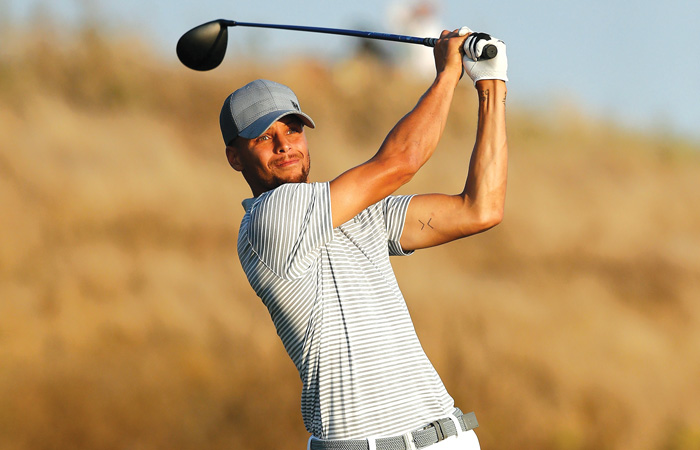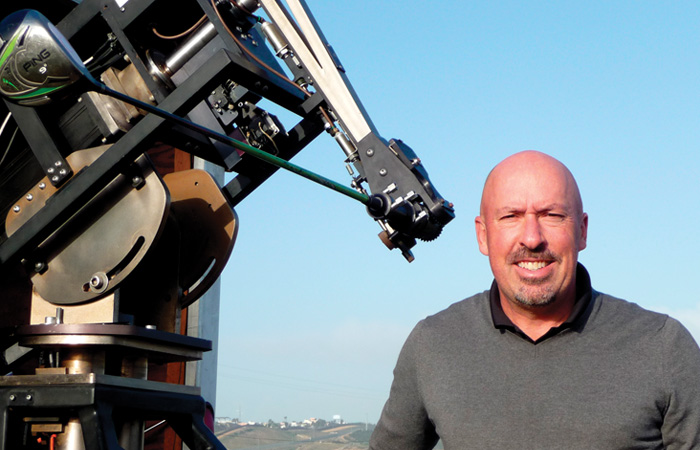How could the average golfer ever dare to imagine swinging in Bryson DeChambeau’s shoes? After all, he’s a pro who has racked up impressive achievements and smashes drives and sinks putts like almost no one else can. Actually, “swinging with his clubs” would be a far more realistic way to phrase it.
A visit to LA Golf was a dream come true because this boutique OEM (original equipment manufacturer) in the heart of Southern California (close to the fabled Disneyland) was founded on the concept of partnering with professional golfers like Bryson to produce state-of-the-art equipment. Moreover, it’s a company that recruited fabled designer Jeff Meyer, who was given a “blank piece of paper” on which to craft the best clubs and balls. And, it’s a company proudly manufacturing most of its products in California.
The company was founded by Reed Dickens, and started out with the purchase of a shaft manufacturing business that used carbon as the main element for its products. The concept of partnering with the pros was one Dickens had used successfully in a previous baseball bat-producing enterprise. That was how he convinced DeChambeau to partner with LA Golf, so that they could “Try to develop the best equipment to make him perform the best he could.”

In the meantime, Meyer, with his blank canvas, has been busy converting carbon from “coal to diamond” in the manufacture of shafts, putters, drivers, golf balls and the soon-to-be-available irons. He’s been free to use his imagination and materials science background (having worked with Aldila shafts, Titleist shafts and metal woods, and other companies, designing composite structures for over 37 years) to morph golf equipment into high-performance tools.
For instance, says Meyer, “With our carbon background, we’re able to do what no one ever has – make a putter with a carbon body, with its density of 1.5 g/cc as opposed to stainless (steel) with a density of 7.8 g/cc. It gives us the ability to utilize tungsten, stainless and other materials where they’re going to benefit golfers the most.” This concept has been able to improve many ball flight issues – not just for DeChambeau, but also for their many customers.
I was given the opportunity to try my “gamer”(currently used club) and compare its performance to their Bel Air (blade) and Malibu (mallet) putters. What a cool California vibe to be able to own a putter named for a local hot spot, much like Bobby Jones’ famous “Calamity Jane.”
The general LA Golf putter specs include a light carbon body with extra discretionary mass distributed where it can be most useful, helping with the moment of inertia (MOI – resistance to twisting) and center of gravity placement of the club. They start with a block of forged carbon (some putters actually have 365 layers of carbon), which is CNC (computer numerical control) milled (cut) into a blade or mallet shape. Then heavy materials like tungsten are placed optimally to aid putter performance; for instance, to give them a resistance to twisting about the heel-to-toe axis of as high as 7,000 MOI units. This makes the putter very stable even for long putts.
Their putter faces have descending loft technology with variable face loft going down from 4° at the top to 3° to 2° to 1° at the bottom, thus allowing any angle of attack a golfer might have to still convert to ideal launch. Future generations of the putter will also have specific grooves on the face (suggested by DeChambeau) that will reduce skid and promote pure roll.
Within the general high-performance specs, there are putters that can be optimized to suit any golfer – blade or mallet, different toe hang options with different shaft hosel/neck designs, heel and center shaft placements, and more. Naturally (unlike other OEMs), the shafts are also made by the company in-house, so they too are Tour-validated and have low torque, suitable frequency, and a proprietary viscoelastic material for a buttery soft feel.

Buttery soft indeed, was my personal impression, too. The “Bel Air Bryson Prototype: blade with its tungsten heel and toe inserts felt and performed the best of the four putters tested. Meyer added, “It’s one of the best putters we’ve made to date – the ball comes off the face really well.”
The Bryson Prototype – officially the Bel Air II – has some unique features that DeChambeau himself has inspired. The head design suits his eye and the things he likes to see when staring down at the club. One of his main contributions are the patent-pending score-lines on the putter face that get the ball rolling almost immediately.
Perhaps the most exciting aspect of the visit was trying Bryson’s driver. Imagine someone with a typical driver ball speed of 80-83 mph having the opportunity to hit with a long, 4° lofted, super stiff shafted weapon … even though the swing weight is lighter because of significant back-weighting in the grip end.
While the swing that I have developed, use and teach will guarantee an upward angle of attack, center contact and square path for the ball, the main requirement for almost any golfer is, of course, speed. Club speed, ball speed, just a lot of speed, please! The ideal backspin and launch angle, Meyer explained, for someone of my ball speed and angle of attack (around 2.6 up) would be 18.8° and 2200 rpm (revolutions per minute). Imagine the thrill of getting not just 85 mpg ball speed, but a launch angle of 12.2° and a spin of 1081 rpm with the Bryson Prototype driver (given its mere 4° of loft!) !
When switching to a regular LA Golf driver with specs more suited to my swing capabilities dialed in, on one shot, my ball speed went up to 88 mph, with a gain of 17 yards of carry distance!
How LA Golf began fitting drivers to different golfers’ club speeds is an interesting story. DeChambeau, with his curiosity and interest in all things golf-tech related, wondered how a driver’s design might be altered so that for someone with his 190 mph ball speeds, the gear effect might not throw his drives way offline – usually, for him, starting slightly right of target but then turning way left.
What exactly is “gear effect?” An effect that results in side-spin on off-center impacts. The bulge of a club (heel-to-toe curvature of the face) is a design feature implemented to counteract that side-spin.
So, DeChambeau’s question led to the development of a family of drivers with different bulge and roll (top-to-bottom curve to improve launch angle on shots hit well above or below clubface center) radii for all skill levels of golfers, based upon their individual club speed.
Moreover, driver head design, based on DeChambeau’s preferences, is very simple and clean, and he doesn’t want to have a bunch of movable parts – just an aerodynamic head with a lot of balance from heel to toe.
DeChambeau also wondered why drivers, fairway woods and even hybrids had bulge and roll for optimizing gear effect, but irons and wedges did not. That question has led to the development of irons that LA Golf will be releasing soon. It was an absolute treat to be able to try out a pitching wedge (PW) made up to DeChambeau’s specs.
The prototype PW was very upright, super stiff, with a heavy head incorporating a chunk of tungsten in it and the clubhead’s center of gravity in its geometric center. The shaft had the same viscoelastic material in it as the putter, for the “buttery soft” feel that Meyer describes, and the grip was the JumboMax that he uses. Of course, in the end, as for most golfers, all that mattered was the result, much more than how the PW had been designed! And, ooh, what a confidence-inspiring feel!
While LA Golf has been able to deliver on a lot of Bryson DeChambeau’s asks, one must wonder why he actually has enough off-center hits to require his clubs to be fitted specifically to counteract that. After all, according to a study by MyGolfSpy, higher swing speeds may be associated with more center strikes.
Does he now plan to have the company focus on ball design for straighter shots, too? During the recent PGA Championship, he stated that he needs a golf ball that flies a little straighter and is less affected by wind and spin.
As a swing researcher of over 32 years one must wonder: can equipment alone compensate for all of a golfer’s swing faults and aid him or her in the search for perfection? Surely the way ahead – for all golfers – is a marriage between the best-possible high-tech equipment and a golf swing that can guarantee improved performance, too. Only time, and the expert designers at LA Golf, will tell!